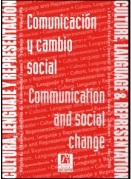A gender perspective on social media tagging: The case of Twitter hashtags of Gezi Park protests
Contenido principal del artículo
Resumen
Gezi Park Protests are undoubtedly one of those recent mass protests occupying an important place in the global agenda. The protests were initially to oppose the construction of the 19th century Ottoman Artillery Barrack within the area of Gezi Park without reconstruction permit. Upon police’s severe intervention to the tens of people keeping cave in the park to save the trees to be cut, the number of those who interacted with each other in social media increased rapidly, turning Gezi Park into a place for contrarian forces to unite. During the protests, all kinds of support, help and cooperation calls are made through social media. The solidarity in Gezi Park became apparent in social media content, showing a general attitude against every kind of discrimination. In this study, we argue whether the sexist discourse used by the protesters related to Gezi Park Protests has been reconstituted by the Twitter hashtags. The Twitter hashtags such as #kirmizilikadin (lady in red), #gazdanadam (gasman), #direnayol (resist ayol), #duranadam (standing man) have been studied, in the context of gender, by the technique of discourse analysis, which is one of the qualitative research methods. People use social tagging with their own words in the way how they conceive the state. The study concludes that the Twitter hashtags on Gezi Park Protests emphasize the power and sovereignty of men while focusing on the appearance and
body of women, who are commonly perceived to be an aesthetic object as indicated by the discourse analysis. Hence, this study provides a significant contribution to the field on how the actual attitude against sexual discrimination in Gezi Park Protests was reflected in social tagging.
Descargas
Detalles del artículo
Se utiliza una licencia de derechos de autor CREATIVE COMMONS de acceso abierto.
Aquellos autores/as cuyos trabajos sean publicados por esta revista esta revista, aceptan los términos siguientes:
Concretamente mediante las siguientes acciones:
- - Los autores/as conservarán sus derechos de autor y garantizarán a la revista el derecho de primera publicación de su obra, el cuál estará simultáneamente sujeto a la Licencia de reconocimiento de Creative Commons CC BY SA que permite a terceros compartir la obra siempre que se indique su autor y su primera publicación esta revista.
- - Cumplimiento de un porcentaje mínimo del 40% de mujeres como revisoras de los trabajos enviados a la revista.
-
Los autores/as conservarán sus derechos de autor y garantizarán a la revista el derecho de primera publicación de su obra, el cuál estará simultáneamente sujeto a la Licencia de reconocimiento de Creative Commons CC BY SA que permite a terceros compartir la obra siempre que se indique su autor y su primera publicación esta revista.
- Los autores/as podrán adoptar otros acuerdos de licencia no exclusiva de distribución de la versión de la obra publicada (p. ej.: depositarla en un archivo telemático institucional o publicarla en un volumen monográfico) siempre que se indique la publicación inicial en esta revista.
- Se permite y recomienda a los autores/as difundir su obra a través de Internet (p. ej.: en archivos telemáticos institucionales o en su página web) antes y durante el proceso de envío, lo cual puede producir intercambios interesantes y aumentar las citas de la obra publicada.


